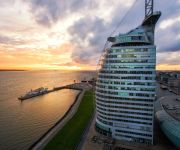Facts and Data
Webpages:
Official Unesco Page
The Wadden Sea
Protectedplanet.net
Basis Data:
Unesco World heritage since: 2009
Size of heritage:
Coordinates:
Longitude: 8,556°
Latitude: 53,529°
Summary
This is an extension of the Dutch and German Wadden Sea site, inscribed on the World Heritage List in 2009. The Wadden Sea is the largest unbroken system of intertidal sand and mud flats in the world. The complete extension now covers most of the Danish Wadden Sea maritime conservation area, as well as a maritime extension of the Dutch Wadden Sea Conservation Area and the German Wadden Sea National Parks of Lower Saxony and Schleswig-Holstein.
Location on Map
Show bigger map on Openstreetmap
The Wadden Sea in Denmark
The Wadden Sea, located on the western coast of Denmark, is a UNESCO World Heritage site renowned for its unique natural beauty and ecological significance. Stretching over 500 kilometers, it is the largest unbroken system of intertidal sand and mud flats in the world, making it a vital habitat for numerous plant and animal species.
History
The history of the Wadden Sea dates back thousands of years. The area has been inhabited since prehistoric times, with evidence of human presence found in archaeological sites along the coast. Over the centuries, the Wadden Sea has played a crucial role in the livelihoods of local communities, providing them with food, building materials, and a means of transportation.
In the Middle Ages, the Wadden Sea became an important trading route, connecting the North Sea with the Baltic Sea. It facilitated the exchange of goods and ideas between different regions, contributing to the economic and cultural development of coastal towns.
However, the exploitation of the Wadden Sea's resources, such as fishing and hunting, began to take its toll on the fragile ecosystem. The introduction of industrialization further exacerbated the environmental degradation, leading to a decline in biodiversity and the loss of natural habitats.
Current State
Recognizing the ecological importance of the Wadden Sea, Denmark, along with Germany and the Netherlands, initiated efforts to protect and preserve this unique natural heritage. In 2009, the Wadden Sea was inscribed as a UNESCO World Heritage site, acknowledging its outstanding universal value.
Today, the Wadden Sea is carefully managed through a combination of national and international regulations. The Danish government, in collaboration with its neighboring countries, has implemented measures to ensure the sustainable use of the area while safeguarding its ecological integrity.
The Wadden Sea is home to a diverse range of species, including migratory birds, seals, and various marine organisms. It serves as a crucial stopover for millions of birds during their annual migration, providing them with abundant food resources and a safe resting place.
Visitors to the Wadden Sea can explore its unique landscape through guided tours and educational programs. These activities aim to raise awareness about the importance of preserving this fragile ecosystem and promote sustainable tourism practices.
Efforts are also underway to restore and protect the Wadden Sea's natural habitats. Restoration projects focus on creating suitable conditions for the growth of seagrass beds, salt marshes, and tidal flats, which are essential for the survival of many species.
The Wadden Sea in Denmark stands as a testament to the resilience of nature and the importance of conservation. Its designation as a UNESCO World Heritage site ensures that future generations can continue to appreciate and benefit from this extraordinary natural wonder.
Hotels and places to stay
Atlantic Sail City
THE LIBERTY
Best Western Plus Hotel Bremerhaven
Haverkamp Suites
Haverkamp
Comfort Hotel Bremerhaven
im jaich boardinghouse
im jaich Hotel
Nordsee Hotel Bremerhaven
Am Theaterplatz
Videos from the area
Videos provided by Youtube are under the copyright of their owners.


















